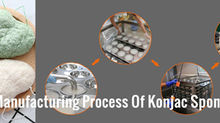Activated Carbon Foam | Multiple Sponge sizes for Filtering Air and Aquarium
Updated: Mar 4, 2021
The activated carbon foam is a mixture of activated carbon powder and polyurethane sponge.

The activated carbon foam is popularly known to be an excellent drinking water purifier in ancient times. Today, activated carbon is used for purification at residential, industrial, and regional levels. It can effectively filter out noxious and harmful substances that can adversely affect its safety, elegance as well as taste of liquids.
How activated carbon filters work has been demonstrated below.
Definition of activated carbon.
Activated carbon is manufactured from organic material that is highly concentrated with natural carbon like peat, coal, coconut husks, and wood. Impurities and water are removed from the raw material by undergoing a gradual heating process in a low-oxygen environment. The generated char will then pass through a series of physical and chemical processing that will enlarge its active surface and develop a submicroscopic network of pores. Activated carbon uses a process known as absorption to filter different organic and inorganic substances.
Activated carbon filters use their large surface area to absorb and attract targeted substances. Its network of pores effectively moves and directs the compounds into its internal surface area where absorption takes place.
Activated carbon foam is also regarded as an activated carbon sponge as a means for air filtration. Activated carbon foams are developed from coconut shells and polyurethane sponge or coal-activated carbon powder. Activated carbon of high quality is then merged on the polyurethane sponge. In an activated carbon foam, the carbon content is at least 50% or more. Its efficiency in purification and filtration is determined by its high carbon content. Its multiple pore sizes offer various filtering efficiency which makes it suitable for different applications, specifications, and customers. Activated carbon foams are usually available in films with a maximum length of 2metres and a maximum width of 1metre which can also be customized to suit any specification. Activated carbon foam is majorly used to eliminate and screen toxic organic substances, odor, fog, formaldehyde, dust, and so on.
Specifications
Base material:
Polyurethane sponge
Material for activated carbon foam:
Coal activated carbon and coconut shell.
Activated carbon network pattern:
Powder activated carbon.
Carbon content
50% or more.
Foam thickness
Between 3mm to 25mm.
Foam length:
Not more than 2 meters.
Foam width:
Not more than 1 meter.
Pore sizes:
Large, middle, and small.
Features:
Multiple pore sizes
We provide activated carbon filters with multiple pore sizes suitable to meet different specifications and applications.
Activated carbon developed using high-quality material.
The coal or coconut activated carbon foam offers high filtration capacity which has been firmly merged on the sponge.
High carbon content.
The high content of carbon guarantees high filtering, purification, and absorption efficiency.
Excellent packaging
Activated carbon foam is popularly packed in cartons which are then packaged into wooden pallets to secure the activated carbon sponge from moisture.
The activated carbon foam is available in multiple pore sizes.
Excellent packaging to safeguard the activated carbon sponge from moisture.
Application
The activated carbon filters feature high content of carbon which delivers high filtration efficiency to remove and eliminate specific odor in the atmosphere. It is also suitable for removing toxic organic substances, formaldehyde, odor, fog, dust, and so on.
The activated carbon filters can also be integrated into activated carbon filter panels or utilized as a folded carbon filter to suit different applications.

The activated carbon sponge can be developed into activated carbon filter panels.

Activated carbon foam can be used as a material for the folded carbon filter.
Although activated carbon filters have shown to be ineffective against certain substances like ammonia and nitrates, activated carbon aquarium filters (eg biochemical cotton koi pond filter, aquarium fish tank biochemical foam filter) are efficient in eliminating toxic substances like phenol and tannin. These multiple-level filtration devices with activation carbon content are being utilized by many aquarium owners to ensure that their fish remains healthy and safe on a full scale.
































